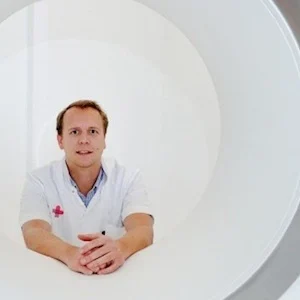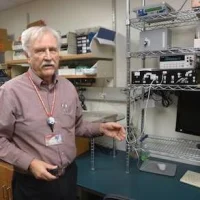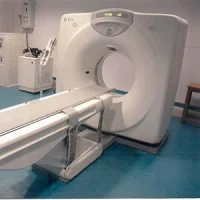A CTA scan (a scan of the arteries) can be performed with a contrast medium volume reduction of up to 75 percent and up to 50 percent reduction in radiation dose, according to a new study from the University of Twente in Enschede, Netherlands. Researchers say the study's results can almost directly be applied in hospitals today, thus providing enormous health benefits to patients.
CT scans using contrast medium are the third most common cause of acute renal failure and renal insufficiency as a result of hospital treatments. In the Netherlands alone, between 1 and 1.5 million CT scans are performed using iodinated contrast media — of which 10 percent are CTA scans — each year.
In this study, researchers have demonstrated that a CTA scan of the aorta can be performed using a significantly lower amount of contrast medium and reducing radiation dose without negatively affecting the image quality.
"In this research, we tried to find the lower limits of what was possible," said Wouter Nijhof, PhD. "It takes a few years of working with these procedures, and then you can draw definite conclusions about the benefits. What's important is that we are raising awareness about the risks involved in taking CT scans with contrast media."
Patients with the presence of an aneurysm are particularly at risk of renal failure or renal insufficiency because they will receive check-ups using CTA scans for the rest of their lives. However, the results of this research are great news for other patients as well. Reducing the volume of contrast medium can also offer the option of doing CTA scans for people with poor renal function which is not possible at present due to the health risks involved.
In addition, radiation exposure as a result of CT scan x-rays can be reduced by 50 percent, making the risks involved of having a CTA scan even smaller, Dr. Nijhof explained. He obtained his PhD at the University of Twente for this research he conducted in collaboration with the Radiology department at the Jeroen Bosch Hospital in 's-Hertogenbosch.
"My PhD thesis may be a good start for follow-up research into whether the reduction of the contrast media volume and reduced radiation exposure could also be used for CT scans using contrast media in other anatomical areas or organs," Dr. Nijhof added.
Source and image credit: University of Twente
CT scans using contrast medium are the third most common cause of acute renal failure and renal insufficiency as a result of hospital treatments. In the Netherlands alone, between 1 and 1.5 million CT scans are performed using iodinated contrast media — of which 10 percent are CTA scans — each year.
In this study, researchers have demonstrated that a CTA scan of the aorta can be performed using a significantly lower amount of contrast medium and reducing radiation dose without negatively affecting the image quality.
"In this research, we tried to find the lower limits of what was possible," said Wouter Nijhof, PhD. "It takes a few years of working with these procedures, and then you can draw definite conclusions about the benefits. What's important is that we are raising awareness about the risks involved in taking CT scans with contrast media."
Patients with the presence of an aneurysm are particularly at risk of renal failure or renal insufficiency because they will receive check-ups using CTA scans for the rest of their lives. However, the results of this research are great news for other patients as well. Reducing the volume of contrast medium can also offer the option of doing CTA scans for people with poor renal function which is not possible at present due to the health risks involved.
In addition, radiation exposure as a result of CT scan x-rays can be reduced by 50 percent, making the risks involved of having a CTA scan even smaller, Dr. Nijhof explained. He obtained his PhD at the University of Twente for this research he conducted in collaboration with the Radiology department at the Jeroen Bosch Hospital in 's-Hertogenbosch.
"My PhD thesis may be a good start for follow-up research into whether the reduction of the contrast media volume and reduced radiation exposure could also be used for CT scans using contrast media in other anatomical areas or organs," Dr. Nijhof added.
Source and image credit: University of Twente
Latest Articles
healthmanagement, aorta, CT scans, CT angiography, radiation dose, contrast media, aneurysm
A CTA scan (a scan of the arteries) can be performed with a contrast medium volume reduction of up to 75 percent and up to 50 percent reduction in radiation dose, according to a new study from the University of Twente in Enschede, Netherlands.










